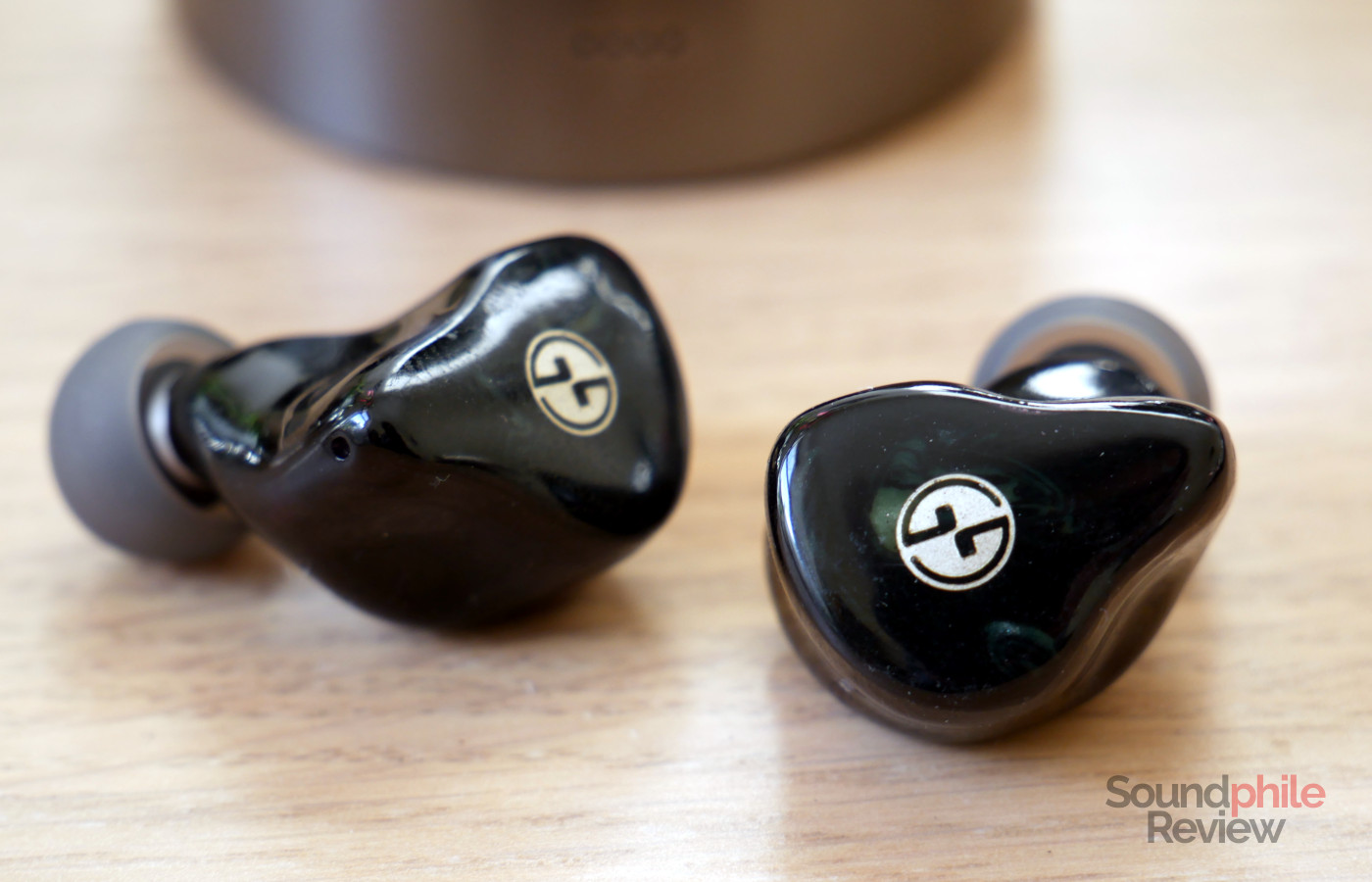Third time’s the charm? Tin HiFi is a brand that has gained quite a following in a short time due to their products offering a very high performance/price ratio. The company has so far failed at producing good TWS earbuds though, with all attempts having at least one major issue. The Tin HiFi Tin Buds 3 are the latest true wireless earbuds to hit the market and they promise to deliver better value than their predecessors (and none of their issues). Will they succeed at that?
Disclaimer: I received a free unit from Linsoul. They sell the Tin Buds 3 for ~$90.
TL;DR: recap
| Pros |
Cons |
| + Decently comfortable | – Low battery life
– Poor connectivity – Very strong hiss – Design issues with the case – Volume is too high |
Rating: 4/10
Packaging & Accessories
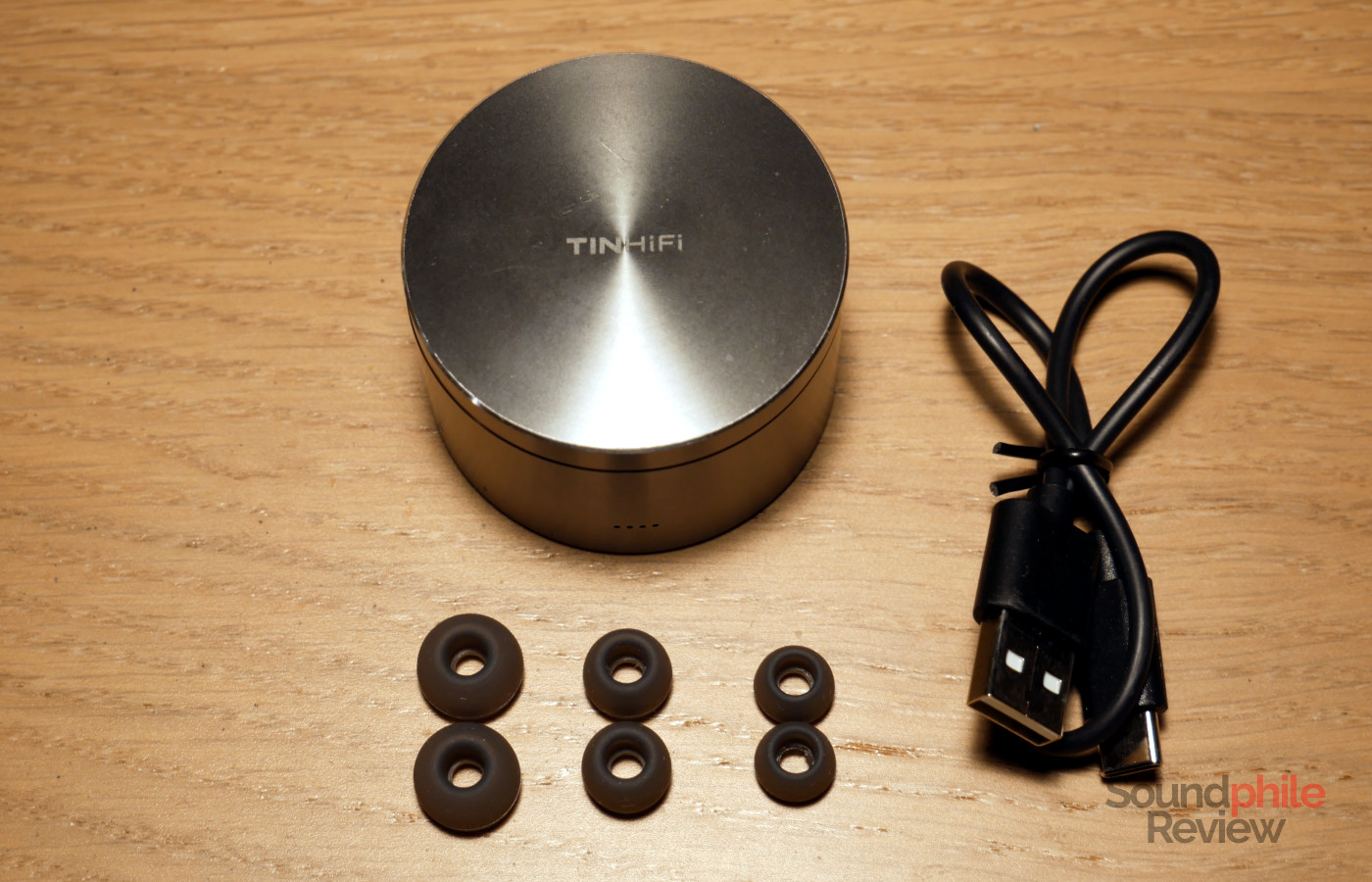
The packaging is in line with previous Tin HiFi products, with a twist: the cardboard box is covered in a fabric-like material with elevated grooves that give it quite an unusual look. Inside it are the earphone sin their case, as well as a set of eartips for a total of four different sizes and a USB to USB-C cable.
Design & Comfort
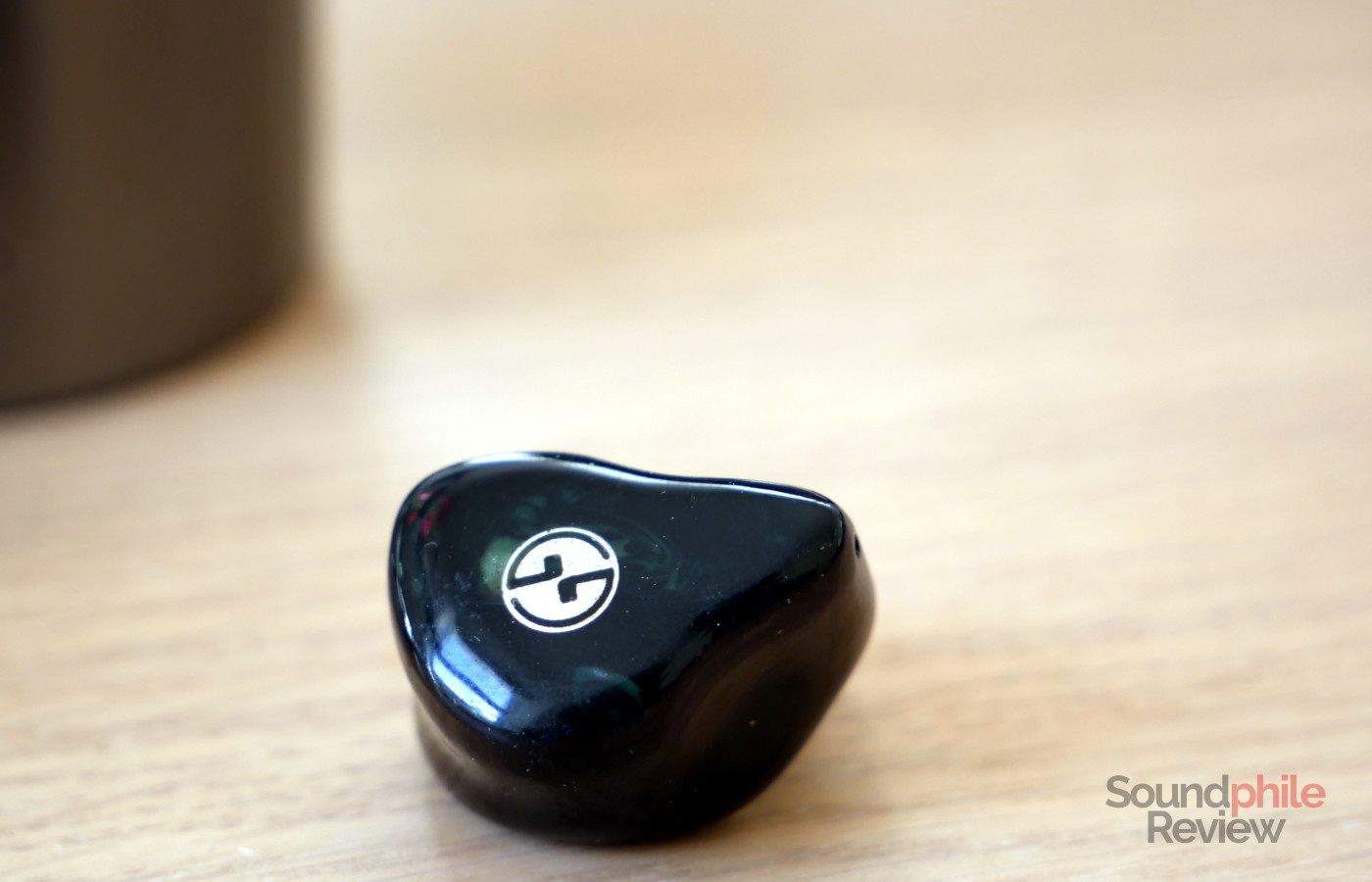
There’s not much new in terms of design with the Tin HiFi Tin Buds 3: they’re the classic IEM. They surely show quite a change compared to the previous T2000, but in the overall greater picture they end up being relatively anonymous. Not to say that’s a bad thing, as this is a shape that works very well and grants good comfort to a number of people. The shells are made of solid black plastic, with the nozzles made of metal. The faceplates feature a swirl of colours that are barely visible, but which add personality to the design; the blue version appears much more colourful.
Build quality is, as expected with Tin HiFi products, very high. I cannot find any apparent flaws with the assembly of the earphones.
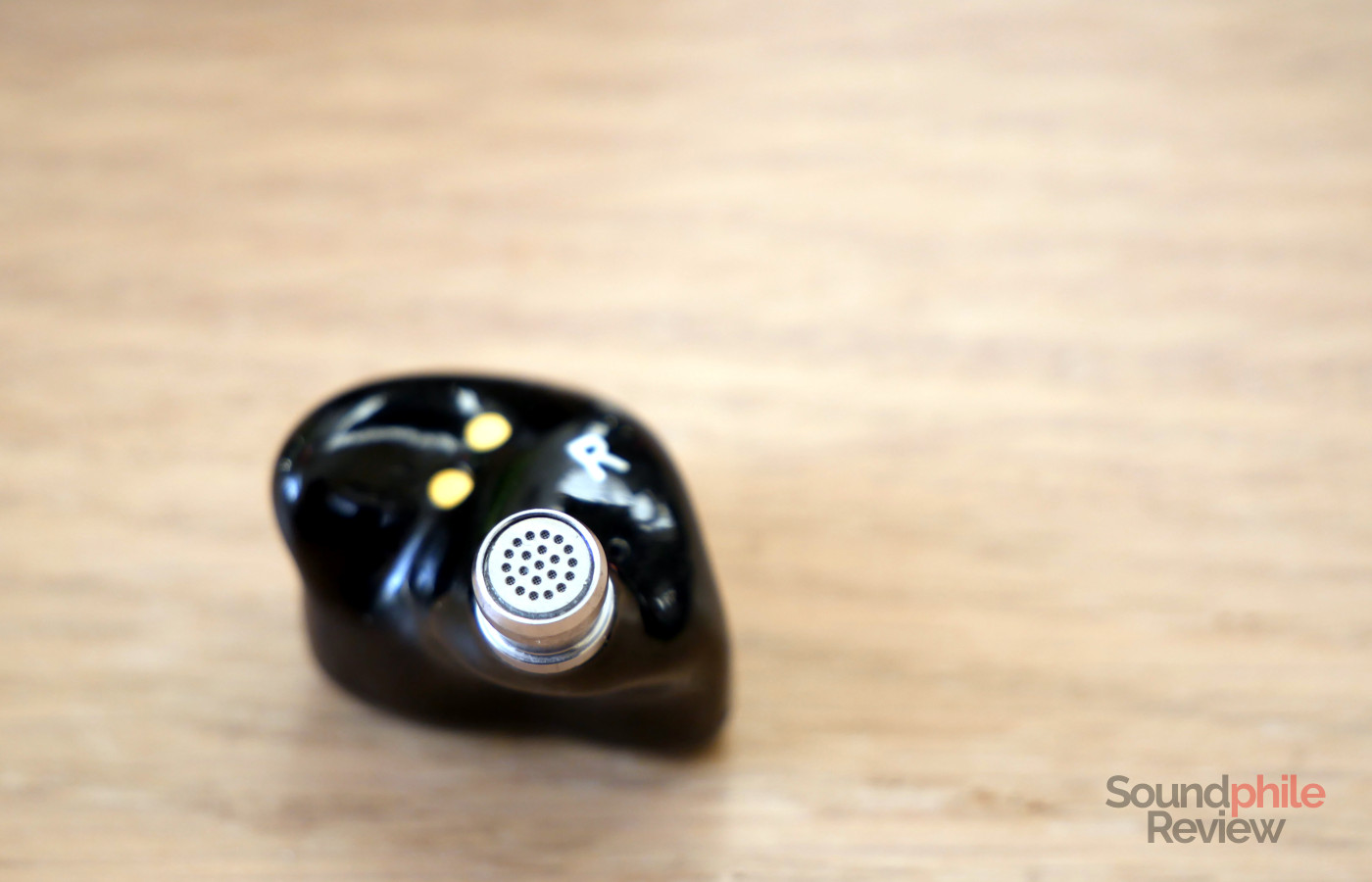
Passive isolation is definitely not the Tin Buds 3’s best quality and, in fact, it is severely lacking, even using eartips which I find to be well-isolating with other earphones. Trying to wear the Tin Buds 3 at the gym, as an example, I couldn’t hear the music over the noises around me, and the same would apply to walking on the street or, even worse, going on the subway.
Comfort, on the other hand, is quite decent. The earpieces are small enough to fit in most people’s ears and their shape is such that it does not cause discomfort.
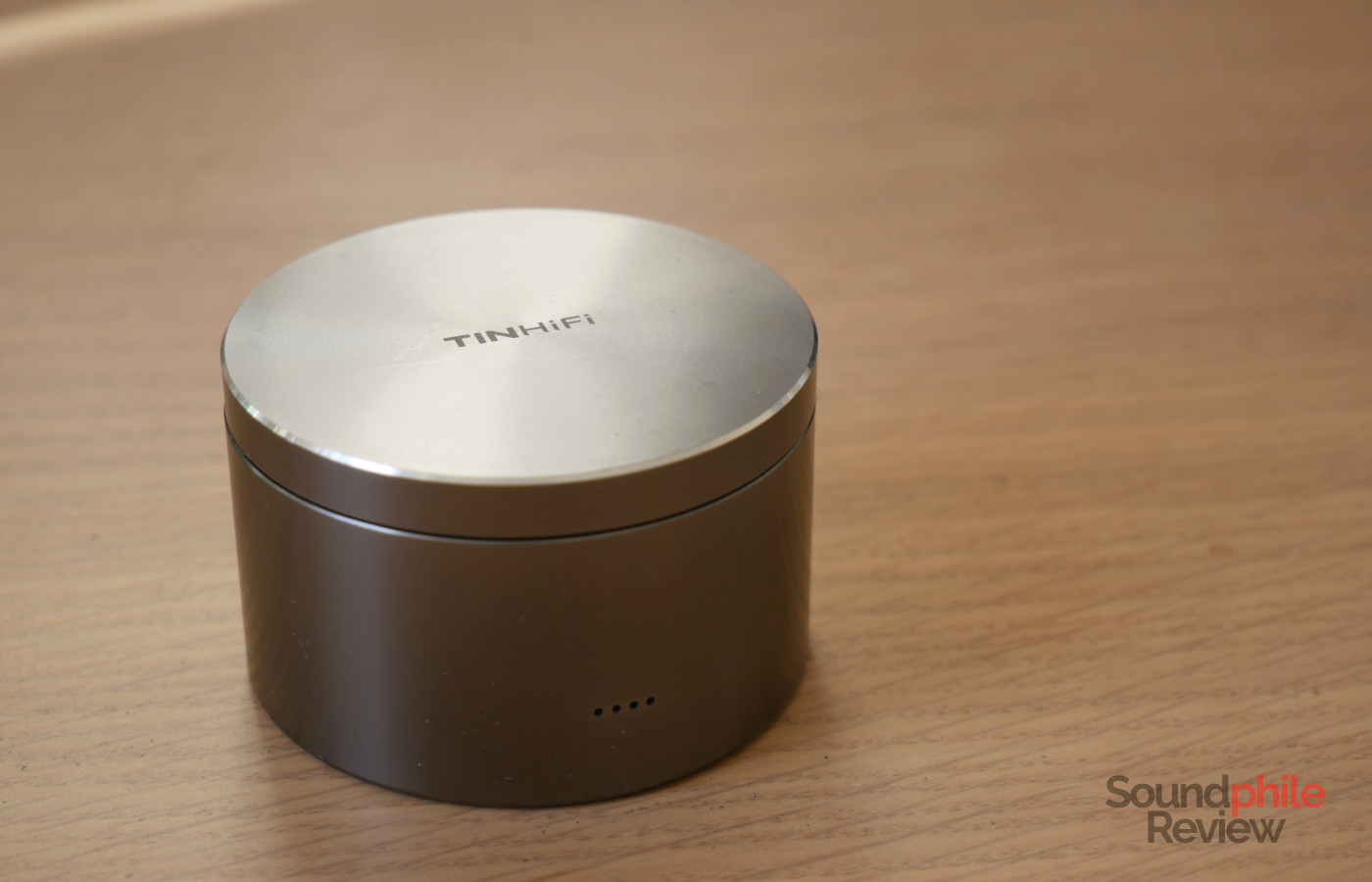
The case is really gorgeous, as it is a short cylinder made of machined aluminium. The top reminds me of a CD with its coloured reflexes. The bottom is made of plastic and there is a USB-C port on the back, as well as three status LEDs on the front. The lid swivels to reveal the inside of the case with the earphones. It is held in place by a magnet. That’s where the problem lies though, as the magnet is not strong enough to always hold the lid in place: it has happened to me multiple times that the lid would open when I placed the case in a bag, with the earphones then needlessly turning on and wasting precious battery life. That’s a significant design flaw that stems from prioritising form over function.
Extra Features & Battery Life
The Tin HiFi Tin Buds 3 feature compatibility with the Bluetooth 5.2 standard with the SBC, AAC and aptX codecs laid on top of it. The range and strength of the connection are sufficient at best and I experience stutters and drops as soon as I step outside the room where my computer is, which is hardly a great thing.
The control scheme is simple enough but quite complete. You turn on the earphones by touching them for three seconds and turn them off by touching them for six seconds; play/pause with a single tap; answer/end calls with two taps; invoke the voice assistant with three taps; reject calls with a 2-second press; skip to the previous (left) or next (right) song with two taps; and reduce (left) or raise (right) the volume with a long-press of 2 seconds. Unfortunately I was never able to use the volume controls on my unit.
There are some issues with turning them on and off. It has happened to me a few times that I enabled the Bluetooth on my computer and I heard a faint voice saying “connected”. It turns out that it was the Tin Buds 3, which were turned on inside their case despite not having been used for a full day (fun fact: it happened again as I was proofreading this part of the review, and I hadn’t used the Tin Buds 3 for a few hours!). This brings me to another thing I really don’t like about the Tin Buds 3, which is how they manage volume. While you can (obviously enough) set the volume, it only applies to music and other audio streamed from your source. This means, in turn, that it doesn’t apply to system messages, which are blasted at full volume straight to your eardrums if you are unfortunate enough to be wearing the earphones when these messages play. The problem is that “full volume” here means “very high volume to the point it causes you discomfort”. It’s high enough you can hear it with the earphones a good half a metre away from your ears, and even when they are inside the case as I mentioned previously.
Speaking of issues with volume, the minimum you can set is still quite high, enough so that I can’t use the Tin Buds 3 with my phone or portable players as they don’t allow me to reduce it to the point it feels comfortable. I can only use them with my computers, as they (for reasons unknown to me) allow me to lower the volume much more.
Battery life doesn’t seem to be especially good as it’s around 4 hours while simply leaving them on, without reproducing any audio. It doesn’t differ too much if you play music, but the result is not quite on par with the competition – even the entry-level models.
Sound & Specs
I have tested the Tin HiFi Tin Buds 3 mostly using my laptop computer.
Tin HiFi Tin Buds 3 |
| Frequency response | N/A |
| Impedance | N/A |
| Sensitivity | N/A |
| Bluetooth version | 5.2 |
| Codecs | SBC, AAC, aptX |
There is a very strong background hiss, so strong that it actually covers the music if it’s quiet (e.g. Astropilot’s Sanctum). It does not change with the volume, even when you lower or raise it directly from the earphones themselves. This seems to be poor quality amplification at work.
Soundstage is unexpectedly large: although instruments sound like they’re relatively close to the listener, the space they’re in sounds quite large, in both width and depth. Imaging is only sufficient, as it does offer distinct instrument positions, but they’re mostly concentrated around the centre area, with almost no sound coming from extreme left and right sides. Instrument separation is okay(ish), with more complex tracks showing its limits.
Bass is excessively emphasised and often ends up in front of the mids. It has good extension despite the small size of the earphones and of the driver, hitting sub-bass easily. The bulk of the bass is found in the mid-bass area, anyway. What’s good is that there’s great speed, which contributes to making transients sound quite lively. Detail is also sufficient.
Midrange is influenced by its surroundings and is therefore V-shaped, with the lower and upper areas sounding more emphasised than the middle one. It doesn’t really sound distant, but it does sound a bit weird. Detail is quite good, as is (once again) speed.
Treble is very emphasised, to the point it is often fatiguing. The emphasis starts in the lower region and reaches its peak in the middle one, with a somewhat steep slope after that. There’s a very good amount of detail which gives more depth to the region, but it is also somewhat hampered by the constant background hiss.
Final Thoughts
The Tin HiFi Tin Buds 3 fall perfectly in line with previous true wireless earbuds made by the company in the past. In other words, they’re a product I cannot recommend as they’re plagued by a variety of issues that simply aren’t there on competitors, even when looking at entry-level ones. There is a ton of issues with the user experience especially, ranging from volume to powering off the earbuds when they’re in the case, from a loud background hiss to the case opening when it shouldn’t, which make the Tin Buds 3 overall unpleasant to use. This is not to mention sound quality, which is far from being the best of the bunch. At about $90, the Tin Buds 3 face stiff competition and, to state things plainly and simply, they are simply nowhere near as good as their competitors.
I really hope that Tin HiFi manages to do things properly in the future, as there is clearly a market for earphones with their signature tuning and with good TWS functionality – it just so happens that they haven’t been able to deliver on this yet.

